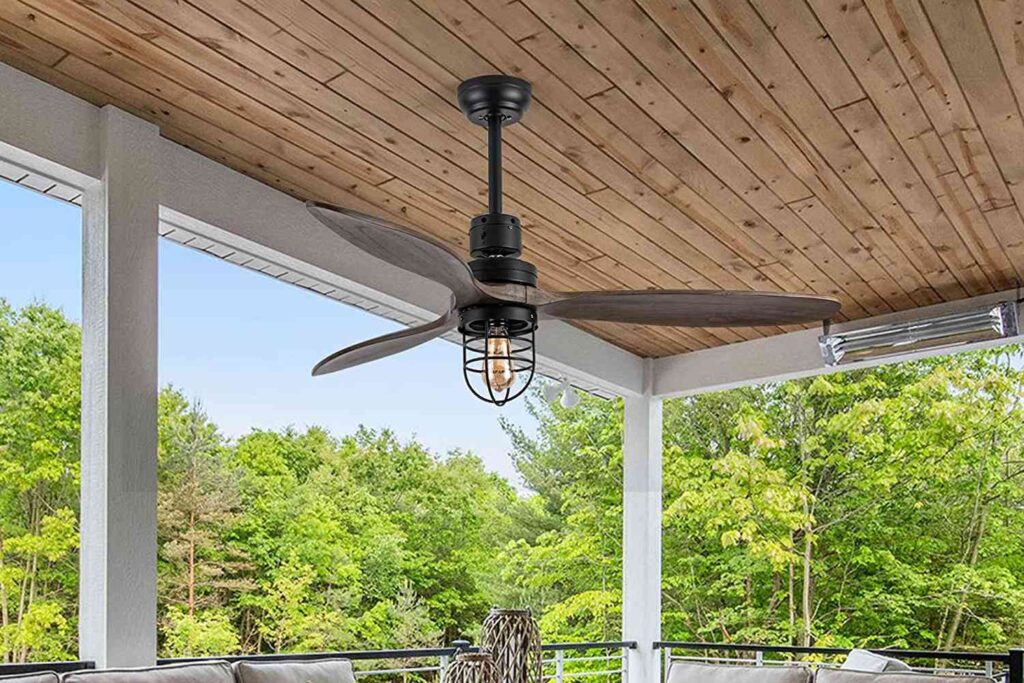Purpose of article
Are you planning to enhance your outdoor living space with a patio ceiling fan? If so, you might be wondering what size ceiling fan do you need for your patio. Choosing the right size ceiling fan is crucial for ensuring maximum comfort and minimizing energy costs. In this article, we’ll guide you through the different factors to consider to determine the perfect size ceiling fan for your outdoor space. From square footage to blade span and airflow capacity, we’ll cover everything you need to know to make an informed decision. Whether you have a small covered porch or a large outdoor patio, we’ve got you covered. By the end of this article, you’ll be equipped with the knowledge and expertise to choose the perfect size ceiling fan for your patio.
Outline of article
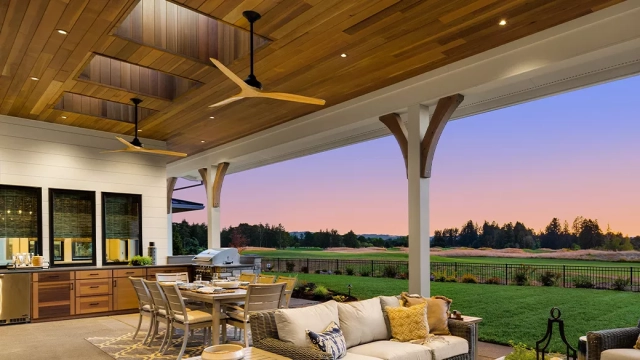
Are you looking to add some much-needed airflow to your patio? A ceiling fan can do wonders for keeping you cool during the warmer months and adding an aesthetic touch to your outdoor living space. But what size ceiling fan do you need for your patio? There are a few factors to consider when choosing the right size for your space.
Firstly, you’ll want to determine the square footage of your patio. This will give you a good idea of how much coverage you’ll need from your ceiling fan. For outdoor spaces, it’s recommended to choose a fan with a blade span of at least 52 inches for a patio measuring between 144 to 225 square feet. For spaces measuring between 76 to 144 square feet, a fan with a blade span of 44 to 50 inches should suffice.
Ceiling height is another important factor to consider. For ceilings measuring 8 feet or lower, a hugger ceiling fan is ideal as it sits flush against the ceiling. Sloped or angled ceilings may require a special adapter for proper installation.
The type of fan you choose will also depend on the conditions of your patio. Wet-rated ceiling fans are designed to withstand exposure to moisture, while damp-rated fans can handle less intense moisture conditions but shouldn’t be directly exposed to rain or snow. If your patio or porch is completely covered, a damp-rated fan should suffice. Otherwise, a wet-rated fan may be necessary.
Airflow capacity is also an important consideration. Look for a fan with a high cubic feet per minute (CFM) rating to ensure it will provide sufficient airflow. A fan with a gentle breeze may be fine for most patios, but if you live in an area with hot and humid summers, a fan with a stronger wind may be necessary.
Other factors to consider include blade shape, motor housing, fan speed, and direction, as well as electrical components and bulb type. By taking into account the above factors, you’ll be able to choose the right size ceiling fan for your patio and enjoy a cool breeze all summer long.
Factors to Consider When Choosing the Right Size Ceiling Fan for Your Patio
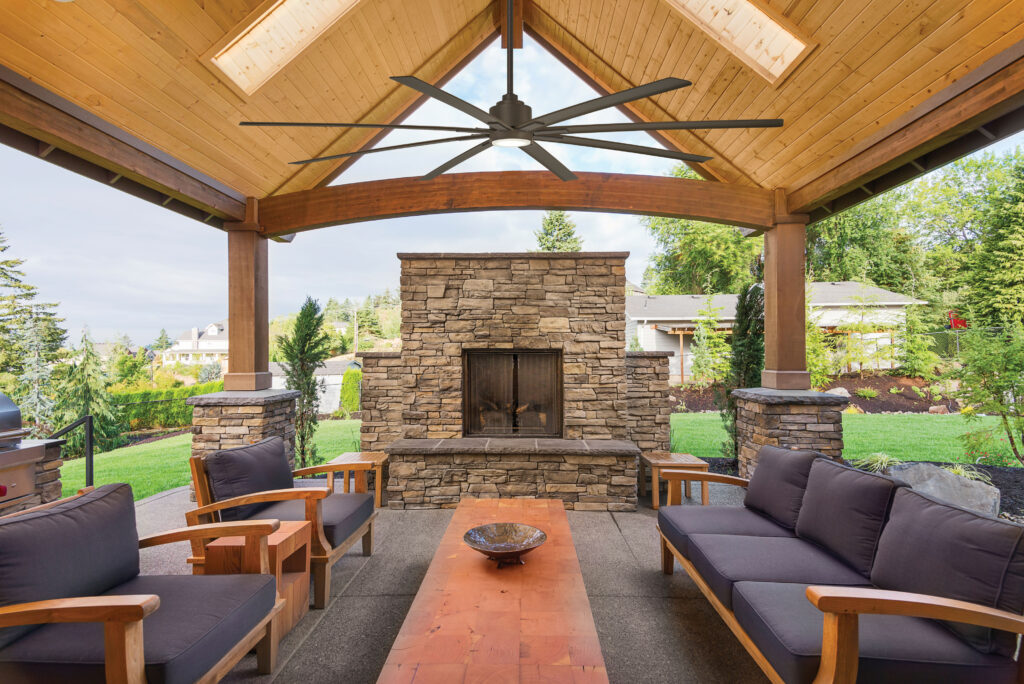
Ceiling fans are a great addition to any outdoor living space, especially on a patio. They not only provide a cool breeze, but also add to the aesthetic appeal of your outdoor area. However, when it comes to selecting a ceiling fan for your patio, there are many factors to consider to ensure you make the right choice.
The first factor you should consider is the square footage of your patio. A ceiling fan with a blade span of at least 52 inches is recommended for a patio measuring between 144 to 225 square feet. For a smaller patio measuring between 76 to 144 square feet, a fan with a blade span of 44 to 50 inches should work fine. It’s important to choose the right size because a fan that’s too small won’t provide sufficient coverage, while a fan that’s too large can be overwhelming and take up too much space.
Ceiling height is another crucial factor. For ceilings measuring 8 feet or lower, a hugger ceiling fan is the ideal option as it is designed to sit flush against the ceiling. If your patio has a sloped or angled ceiling, you may need a special adapter for proper installation.
The type of fan you select is also important. Outdoor ceiling fans come in two different ratings: damp-rated and wet-rated. Wet-rated ceiling fans can handle exposure to rain and snow, while damp-rated fans can handle less intense moisture conditions but shouldn’t be directly exposed to rain or snow. If your patio or porch is completely covered, a damp-rated fan should suffice. Otherwise, a wet-rated fan may be necessary.
Airflow capacity is another factor to consider. Look for a fan with high cubic feet per minute (CFM) rating to ensure that it will provide sufficient airflow. If you live in an area with hot and humid summers, a fan with a stronger wind may be necessary. But if you just want to have a gentle breeze on your patio, then a fan with a softer airflow should be sufficient.
Lastly, you should also consider the style of the ceiling fan. Outdoor ceiling fans come in a range of styles, from modern to rustic. You don’t have to compromise on style when it comes to outdoor fans, as there are plenty of options available that will match the aesthetic of your patio.
In conclusion, there are many factors to consider when choosing the right size ceiling fan for your patio. By taking into account the square footage of your patio, ceiling height, fan rating, airflow capacity, and style, you can make an informed decision and select the perfect ceiling fan for your outdoor living space.
Square Feet/Square Footage
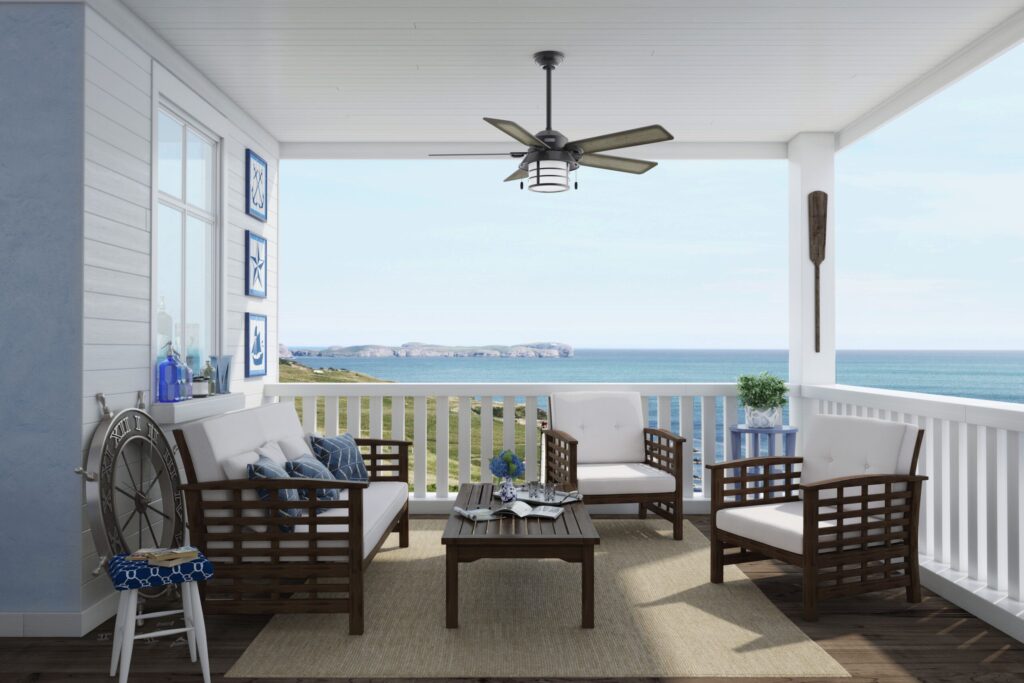
Square feet, or square footage, is a measure of area commonly used in real estate and construction. It refers to the amount of space covered by a flat surface, such as a floor or a roof. Knowing the square footage of a space is important for various reasons, such as determining the appropriate size and capacity of equipment and appliances, estimating material requirements, and calculating costs.
To find the square footage of a space, you simply need to measure its length and width in feet and multiply the two numbers. For example, if a room is 10 feet by 12 feet, its square footage would be 120 square feet (10 x 12). In some cases, you may need to measure irregularly shaped spaces or subtract areas for things like closets or built-in furniture.
When it comes to real estate, square footage can play a big role in determining the value of a property. Homes with larger square footage usually command higher prices, as they offer more living space and amenities. However, it’s important to note that not all square footage is created equal. Some spaces, such as a finished basement or a converted garage, may not be counted as livable square footage by appraisers or potential buyers. Additionally, the quality and layout of the space can also impact its value.
Square footage is also important in construction, particularly for determining the amount of materials needed for a project. Building materials, such as flooring, roofing, and siding, are usually sold based on their coverage area in square feet. Knowing the square footage of a space can help contractors and builders order the correct amount of materials, reducing waste and saving money.
Overall, square feet or square footage is an important measurement to know when it comes to various industries, whether it’s in real estate, construction, or even interior design. Accurately calculating the square footage of a space can help ensure that projects are completed efficiently and effectively.
Outdoor Spaces and Outdoor Living Space
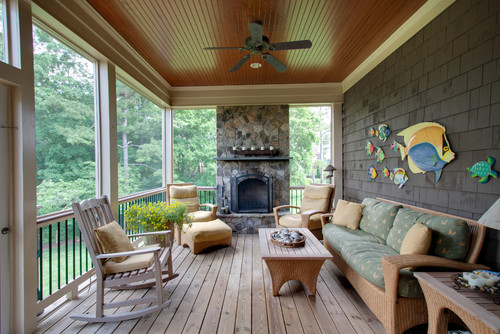
Outdoor spaces have become increasingly popular in recent years as people seek to expand their living areas beyond the walls of their homes. Whether it’s a backyard oasis, a rooftop patio, or a front porch, outdoor living spaces can create a serene and peaceful environment for relaxation, connection with nature, and social gatherings.
Outdoor living spaces can come in all shapes and sizes, from small and intimate to large and spacious. The key to creating a successful outdoor living space is to consider the needs and desires of the homeowner, as well as the environmental factors of the space, such as location, lighting, and weather conditions.
One factor to consider when creating an outdoor living space is the size of the space itself. The square footage of the outdoor area will influence the types and sizes of furnishings and decor that can be added to the space. For example, in a small outdoor space, a bistro table and two chairs may be all that’s needed to create an intimate seating area, while a larger space may require multiple seating areas and dining tables to accommodate larger groups.
Another important factor to consider when creating an outdoor living space is the type of flooring and ground covering. From grass to gravel to stone and tile, different types of ground coverings can create vastly different looks and feels in an outdoor space. It’s also important to consider the durability of the flooring and whether it can withstand the elements, foot traffic, and wear and tear over time.
When it comes to furnishing an outdoor living space, the options are endless. From outdoor sofas and chairs to hammocks and swings, there are a variety of seating options for people to relax and enjoy the outdoors. Decorative elements such as outdoor rugs, throw pillows, and lighting can also add a touch of personality and style to an outdoor living space.
Finally, it’s important to consider the climate and weather patterns of the area when designing an outdoor living space. The use of shade and protective coverings, such as umbrellas or pergolas, can allow for year-round use of the space and protect the furnishings and decor from rain, snow, and harsh sunlight.
Overall, outdoor living spaces offer a unique and refreshing way to enhance a home’s living space and create a connection with the natural world. With thoughtful planning and consideration, homeowners can transform their outdoor spaces into an inviting and functional extension of their home.
Ceiling Height
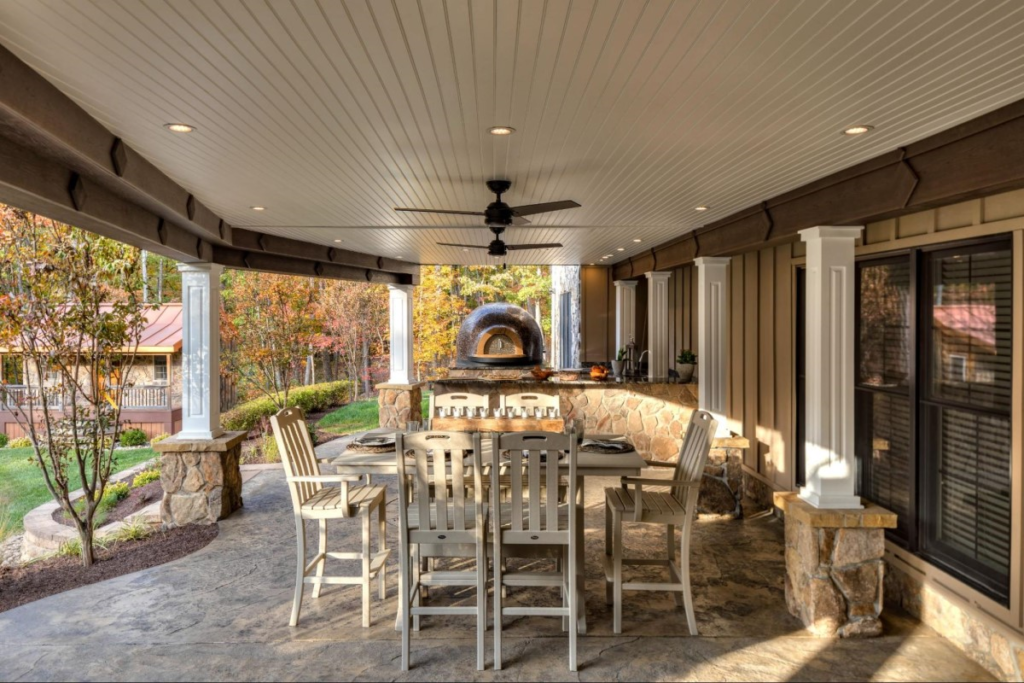
Ceiling height is an important factor to consider when designing any space, whether it’s a home, office, or commercial building. The height of the ceiling can impact the overall feel and functionality of a room in several ways.
For starters, a higher ceiling can give a room a more spacious and open feel. This can be particularly useful in smaller rooms where space is limited. By drawing the eye upwards, a higher ceiling can create the illusion of more space and make the room feel less cramped.
On the other hand, a lower ceiling can create a more cozy and intimate feel, making a large room feel more inviting and comfortable. This can be especially useful in rooms like a bedroom or living room, where a more relaxed ambiance is desired.
Ceiling height can also impact the acoustics of a room. Higher ceilings can create more echo and reverberation, while lower ceilings can help reduce sound levels and create a more contained sound environment. This can be important for rooms where sound quality is a consideration, such as a recording studio or home theater.
Another important factor to consider when it comes to ceiling height is the type of lighting that will be used in the room. Higher ceilings can accommodate taller lighting fixtures that can create a more dramatic look and feel. Lower ceilings may require flush or semi-flush mount fixtures that don’t take up as much vertical space.
One thing to keep in mind when considering ceiling height is the practicality of the height in relation to the room’s function. For example, in a kitchen with high cabinets, a lower ceiling may be more practical to ensure that the upper cabinets are easily accessible.
In conclusion, ceiling height is an important consideration when designing any space. It can impact the overall feel of the room, the acoustics, and the lighting. It’s important to consider both the aesthetic and practical aspects of ceiling height when designing a space to ensure that it’s both functional and visually appealing.
Motor Housing and Blade Span
When it comes to purchasing a new ceiling fan for your patio or outdoor living space, there are a few key factors that you should consider. Two of the most important factors are motor housing and blade span.
Motor housing refers to the part of the ceiling fan that houses the motor. It plays a crucial role in the fan’s overall function and durability. There are two main types of motor housing: open and enclosed.
Open motor housing is typically found in indoor ceiling fans and is not suitable for outdoor use. Enclosed motor housing, on the other hand, is designed to protect the fan’s motor from exposure to the elements and is suitable for use in both damp and wet locations.
Blade span refers to the overall diameter of the fan’s blades. This measurement is important because it determines how much air the fan is able to circulate in the given space. A fan with a larger blade span will be able to circulate air over a larger area than a fan with a smaller blade span.
When choosing a ceiling fan for your outdoor living space, it is important to consider the square footage of the area you want to cool. Fans with a blade span of 52 inches are typically suitable for spaces up to 225 square feet, while fans with a blade span of 44 inches are better suited for spaces up to 144 square feet. It is also important to consider the ceiling height of your outdoor living space. For higher ceilings, a fan with a longer downrod may be necessary to ensure proper airflow.
In addition to motor housing and blade span, there are other important factors to consider when purchasing a ceiling fan for your outdoor living space. These include the fan’s airflow capacity, fan speed, blade shape, and wet or damp rating. By taking all of these factors into account, you can ensure that you choose a ceiling fan that is both functional and aesthetically pleasing for your patio or outdoor living space.
Sloped Ceiling or Vaulted Ceilings
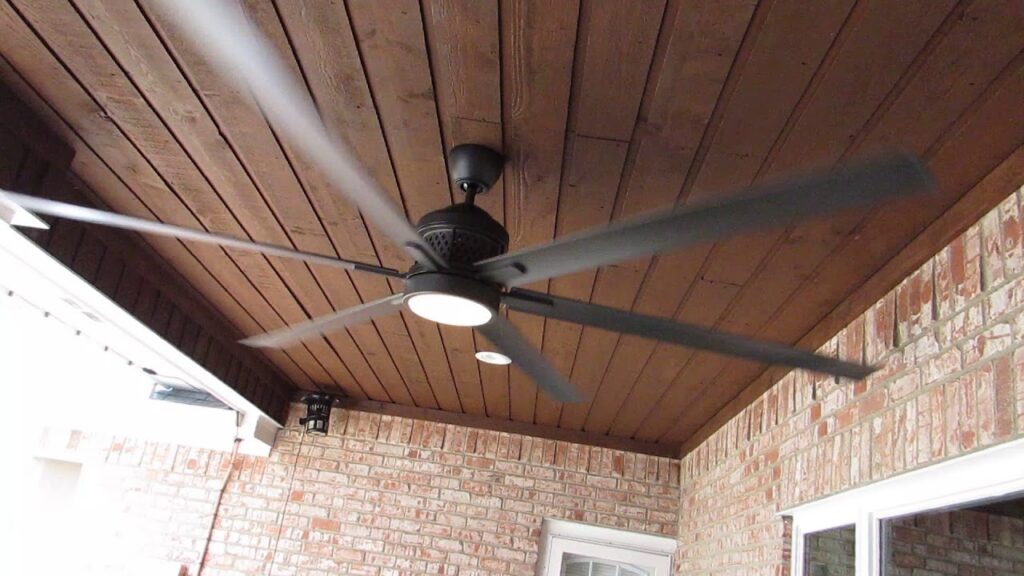
When it comes to choosing a ceiling fan for a room with a sloped or vaulted ceiling, there are a few key factors to consider.
Firstly, it’s important to ensure that the fan you choose is designed to be installed on a sloped ceiling. This is because most standard ceiling fans are designed to be installed on flat ceilings, and may not function properly or safely when installed on a sloped ceiling.
Once you’ve found a fan that is designed for sloped ceilings, you’ll need to consider the angle of the slope. This is because some fans may not be able to accommodate steep slopes, while others may require a special mounting kit to be safely installed.
Another important factor to consider is the height of the sloped or vaulted ceiling. Ceiling fans typically work best when they are installed at a height of 8 to 9 feet above the floor, which may be difficult to achieve with a sloped or vaulted ceiling. In these cases, you may need to use a longer downrod to install the fan at the appropriate height, which will also help to ensure proper airflow.
When it comes to determining the appropriate fan size for a room with a sloped or vaulted ceiling, the same general guidelines apply as for flat ceilings. However, you may also want to consider the size and shape of the room. For example, a larger fan may be more effective at circulating air in a larger room with a high, sloped ceiling, while a smaller fan may be sufficient for a smaller, more compact space.
Ultimately, the key to choosing the right ceiling fan for a room with a sloped or vaulted ceiling is to consider all of the factors that will impact its performance, including angle, height, and room size, and to choose a fan that is specifically designed for use in these types of spaces. By doing so, you can enjoy the benefits of a cool, comfortable living space that is both stylish and functional.
Wet-Rated or Damp-Rated Ceiling Fans
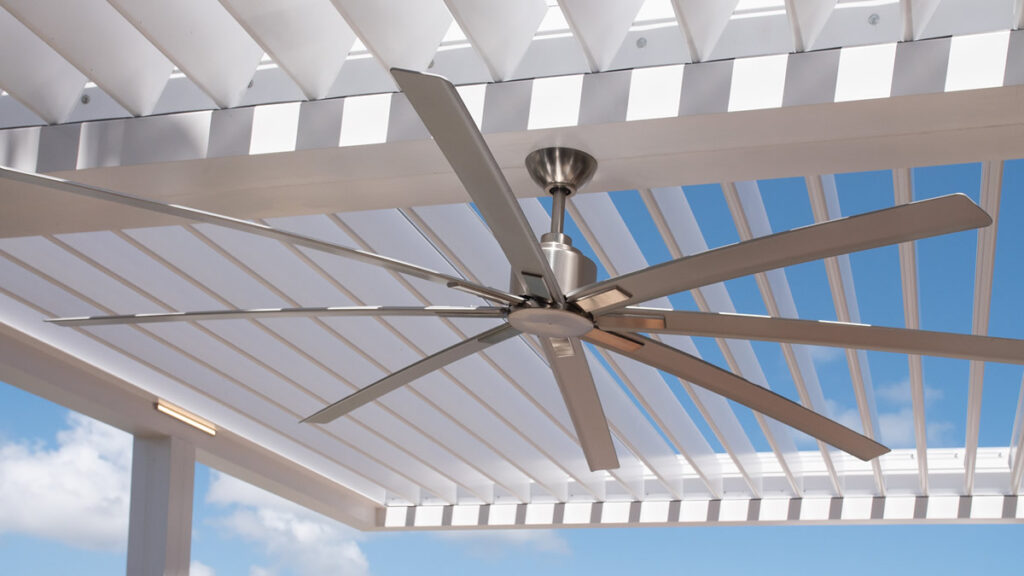
Ceiling fans are a must-have for outdoor living spaces to ensure you can enjoy the breeze even on hot summer days. But, with a variety of options available, it can be confusing to understand which ceiling fan is safe for your outdoor space.
The two most common options are Wet-Rated and Damp-Rated ceiling fans, and it’s important to understand their differences before making a purchase.
Wet-Rated ceiling fans are designed to withstand exposure to direct rainfall, splashing water, and other harsh weather conditions. These fans are constructed with materials that resist corrosion and rust, and their blades are securely fastened to prevent them from blowing off in high winds. Wet-rated fans can be safely used in uncovered outdoor spaces such as pergolas, gazebos, and patios.
Damp-Rated ceiling fans, on the other hand, are designed to withstand high humidity and moisture levels. These fans are suitable for use in partially covered outdoor spaces such as covered patios, sun porches, and verandas. Damp-rated fans may not be able to withstand direct exposure to rain or other harsh weather conditions, but they are excellent for outdoor areas that are exposed to high levels of moisture.
When considering Wet-Rated or Damp-Rated ceiling fans, it’s also essential to look for the UL certification label. This label ensures that the fan has passed rigorous safety tests and meets specific industry standards.
It’s important to note that not all outdoor ceiling fans are Wet-Rated or Damp-Rated, so it’s crucial to check the manufacturer’s specifications before making a purchase. Using an indoor ceiling fan in outdoor living spaces can be extremely dangerous, as these fans are not built to withstand the moisture and humidity levels of outdoor environments.
In conclusion, selecting the right ceiling fan for your outdoor living space involves understanding the weather and moisture conditions that the fan will be exposed to. Wet-Rated and Damp-Rated ceiling fans are both excellent options for outdoor living spaces, but it’s essential to ensure that the fan you choose meets industry standards and safety requirements.
Fan Speed, Motor Size, and Airflow Capacity
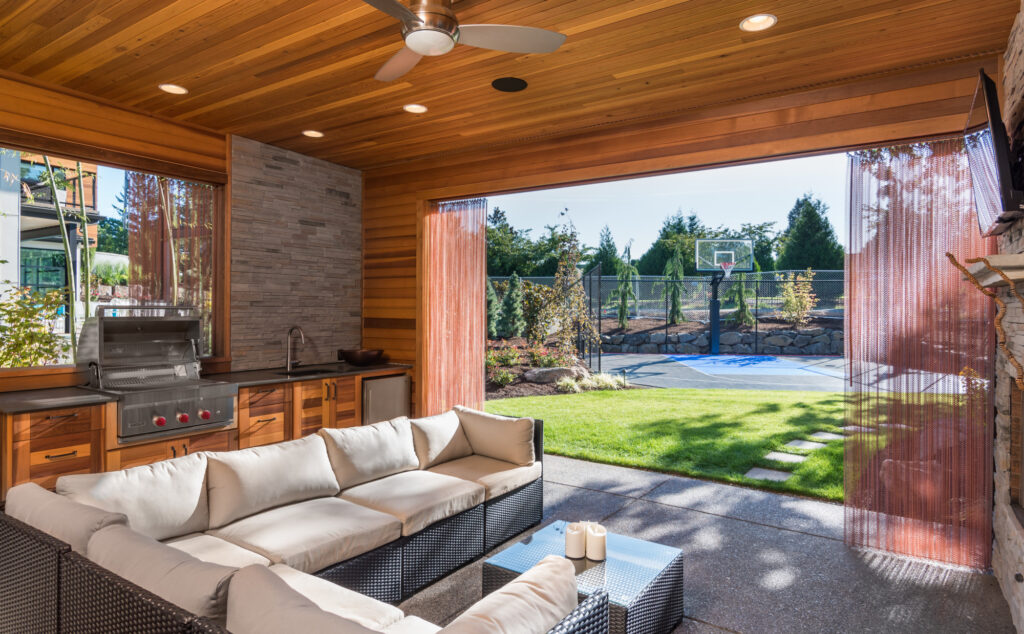
When it comes to selecting a ceiling fan for your patio, there are several important factors to consider. The size of the fan and the location where it will be installed are crucial, but so are factors like fan speed, motor size, and airflow capacity. Let’s take a closer look at each of these factors and how they can impact the performance of your outdoor ceiling fan.
Fan Speed:
Fan speed is measured in revolutions per minute (RPM). The higher the RPM, the faster the fan spins, and the more air it circulates. Most outdoor ceiling fans come with multiple speed settings, typically ranging from low to high. A gentle breeze is great for relaxing on the patio, while a stronger breeze can help to keep insects away. Look for a fan with at least three or more speeds so that you can adjust the fan to suit your needs.
Motor Size:
The motor is the heart of the ceiling fan, and it is responsible for powering the blades and moving air around. The larger the motor, the greater the fan’s output, and the better the overall performance. A bigger motor can also help to reduce noise levels and improve energy efficiency. When choosing a ceiling fan for your patio, look for one with a motor that is powerful enough to handle the size of the area you want to cool.
Airflow Capacity:
Airflow capacity is the amount of air that a fan moves per minute and is measured in cubic feet per minute (CFM). The higher the CFM, the more air the fan can move around the space. The airflow capacity also determines how efficient the fan is at circulating air and cooling the patio. Look for a fan with a high CFM rating that matches your outdoor space’s size for optimal comfort.
In conclusion, when looking for a ceiling fan for your patio, it’s crucial to consider fan speed, motor size, and airflow capacity. By taking these factors into account, you can choose a ceiling fan that will provide optimal comfort and cooling for your outdoor living space. Remember to look for Wet-Rated or Damp-Rated ceiling fans and check the manufacturer’s specifications to ensure that your chosen fan is suitable for outdoor use. With the right fan, you can enjoy a cool and refreshing breeze on your patio all summer long.
Modern or Oversized Ceiling Fans
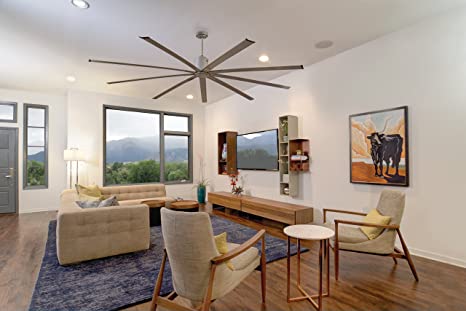
Modern or oversized ceiling fans are a great addition to any patio or outdoor living space. These fans offer both functional and aesthetic benefits, making them a popular choice among homeowners. They come in various styles, designs, and sizes, allowing you to choose one that suits your specific needs and preferences.
Modern ceiling fans have a sleek and contemporary look, making them perfect for those who want to add a touch of style to their patio. They feature clean lines, minimalist designs, and often come with LED bulbs, making them eco-friendly and energy-efficient. These fans are ideal for smaller patios, and they can help to lower your energy bills by reducing your reliance on air conditioning.
On the other hand, oversized ceiling fans are perfect for larger patios or outdoor living spaces. These fans come with blade spans of up to 96 inches, offering maximum air circulation and cooling. They are designed to deliver a constant and gentle breeze, creating a comfortable and refreshing environment. Oversized ceiling fans also come in various designs and styles, making them an excellent addition to any patio theme. You can also use different kinds of lights to enhance your patio theme.
When choosing between modern and oversized ceiling fans, there are several factors to consider. First, consider the size of your patio or outdoor living space. If you have a small patio, a modern ceiling fan may be a better option. However, for larger patios, oversized ceiling fans have a greater airflow capacity and can provide optimal cooling.
You should also consider the height of your patio’s ceiling. Ceiling fans with longer downrods are ideal for vaulted or high ceilings, while hugger fans are suitable for low ceilings. Additionally, the slope of your ceiling can affect the installation of the fan. Sloped ceilings require a special adapter kit to ensure proper installation.
In conclusion, modern and oversized ceiling fans are an excellent addition to any patio. They offer both style and function, providing optimal cooling and creating a comfortable outdoor living space. When choosing a ceiling fan, consider the size of your patio, the height of your ceiling, and the slope of your ceiling. With these factors in mind, you can choose a ceiling fan that suits your specific needs and preferences and enjoy the benefits of a refreshing and comfortable outdoor living space.
Standard Sizing for Ceiling Fans
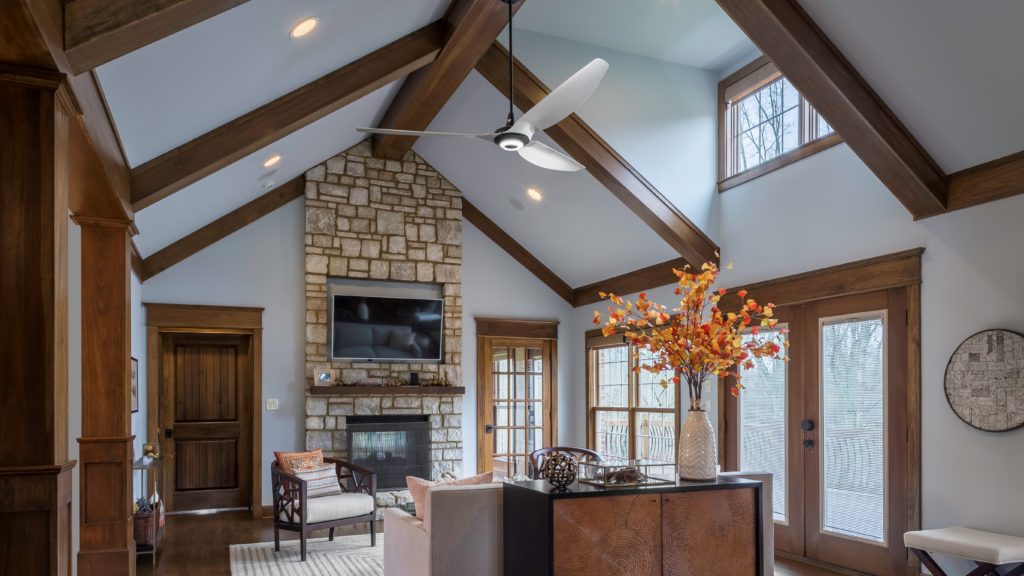
Ceiling fans are a staple in most homes – they help to keep us cool in the summer and circulate warm air in the winter. But when it comes to choosing the right size ceiling fan, things can get a bit confusing. That’s why understanding standard sizing for ceiling fans is essential.
Ceiling fans are measured by their blade span – the distance from the tip of one blade to the tip of the opposite blade. Standard ceiling fan sizes typically range from 52 inches to 60 inches. These sizes are perfect for rooms with an average height of around 8 feet. A ceiling fan with a 52-inch blade span is ideal for a room that is around 225 square feet, whereas a ceiling fan with a 60-inch blade span is suitable for a room that is around 400 square feet.
It’s important to note that ceiling height is also a crucial factor to consider when selecting a fan size. If your ceiling is higher than 8 feet, you should choose a fan with a longer downrod. A downrod is an extension that connects the fan motor to the ceiling mount – it lowers the fan and positions it at the appropriate distance from the ceiling. If the fan is too close to the ceiling, it won’t circulate air correctly, and if it’s too low, it can be dangerous and affect the room’s aesthetics.
Other factors to consider when selecting a ceiling fan size include the shape and size of the room, the fan’s motor housing size, and the number and shape of the fan blades. For example, a fan with fewer and wider blades can move more air than a fan with more, narrower blades. Additionally, a larger motor housing can provide more power to the fan and improve its performance.
In conclusion, understanding standard sizing for ceiling fans can help you choose the right size fan for your home. Make sure to consider your room’s size, ceiling height, and other factors like the fan’s motor housing and blade shape before making a purchase. With the right size ceiling fan, you can stay cool and comfortable all year round.
How to Calculate the Ideal Size for Your Patio’s Ceiling Fan
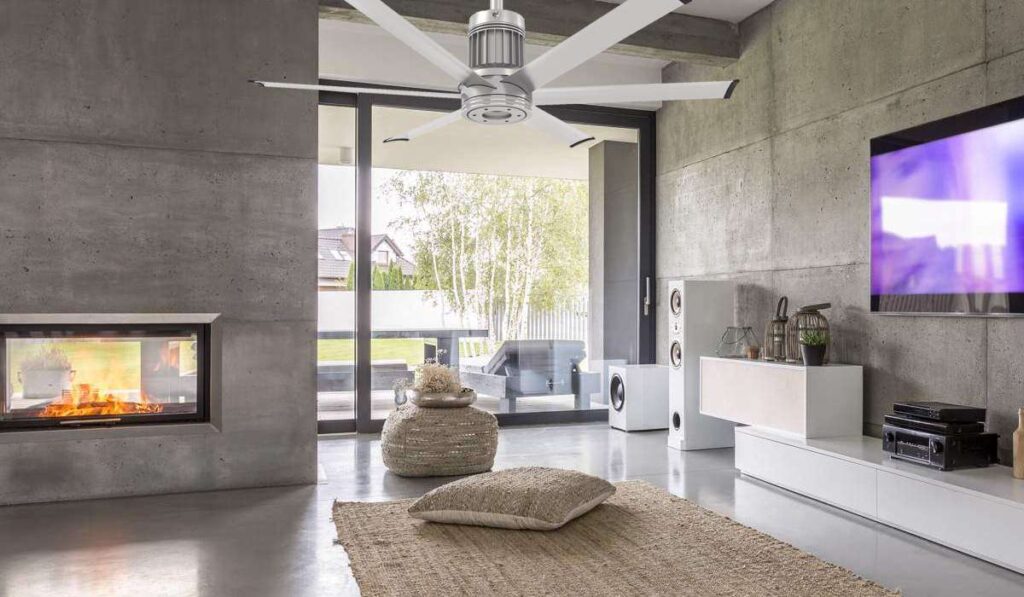
Ceiling fans are a great addition to any outdoor space, including patios, as they can provide a refreshing breeze on hot summer days while also helping to circulate cool air during the colder months. However, choosing the right size ceiling fan for your patio is crucial to ensure maximum efficiency and comfort. Here’s how to calculate the ideal size for your patio’s ceiling fan.
First, measure the square footage of your patio. To do this, simply measure the length and width of the patio and then multiply the two numbers together. For example, if your patio is 12 feet by 12 feet, it would be 144 square feet.
Next, determine the ceiling height of your patio. If your ceiling is standard height (around 8 feet), then you can opt for a standard ceiling fan size of 52 to 60 inches. However, if your ceiling is higher than 8 feet, then you will want to choose a longer downrod to lower the fan to the appropriate height.
Once you have determined your patio’s square footage and ceiling height, you can use these factors to calculate the ideal fan size. As a general rule of thumb, a fan with a blade span of 36 to 44 inches is suitable for a patio that is up to 76 square feet. For patios between 76 to 144 square feet, a fan with a blade span of 44 to 54 inches is recommended. For larger patios up to 225 square feet, a ceiling fan with a blade span of 52 to 60 inches is the best choice.
It’s also important to consider the airflow capacity of the ceiling fan. Look for fans with high CFM (cubic feet per minute) ratings as these fans can move a greater volume of air, resulting in a more comfortable environment. Additionally, consider the wet rating of the ceiling fan, as this determines whether it can be safely used in outdoor spaces that may be exposed to rain or other elements.
In conclusion, choosing the right size ceiling fan for your patio involves considering the square footage, ceiling height, and airflow capacity. By taking these factors into account, you can select a ceiling fan that not only enhances the aesthetics of your outdoor space but also provides maximum comfort and efficiency.
Steps for Installing a New Ceiling Fan on Your Patio

Ceiling fans are a great addition to any outdoor living space, and can provide a cool breeze on even the hottest summer days. Installing a new ceiling fan on your patio may seem like a daunting task, but it can be done with a little bit of patience and some basic tools. Here are the steps for installing a new ceiling fan on your patio:
1. Gather your tools: Before you begin, make sure you have all the tools you will need for the job, including a ladder, screwdriver, pliers, wire strippers, and wire nuts.
2. Choose your fan: Select a fan that is appropriate for outdoor use, and that is the appropriate size for your patio. Consider the design and color of the fan as well, to ensure it fits with the rest of your outdoor decor.
3. Turn off the power: Before starting any electrical work, always turn off the power to the circuit at the circuit breaker.
4. Remove the old fixture: If you are replacing an old fixture, remove it from the ceiling and disconnect any wiring. It’s easiest to do this with the help of a second person to hold the fixture while you work.
5. Install the mounting bracket: Follow the instructions provided by the manufacturer to install the mounting bracket to the ceiling joist. Make sure the bracket is level and secure.
6. Attach the fan motor: Attach the fan motor to the mounting bracket according to the manufacturer’s instructions. Make sure the motor is securely attached and level.
7. Wire the fan: Follow the manufacturer’s instructions to wire the fan. Usually, this involves connecting the wires from the fan motor to the corresponding wires in your electrical box. Use wire nuts to secure the connections.
8. Attach the fan blades: Once the fan motor is wired, attach the fan blades to the motor according to the manufacturer’s instructions. Make sure the blades are secure and balanced.
9. Test the fan: Turn the power back on and test the fan to make sure it is working properly. Adjust the settings as needed to achieve your desired level of airflow.
Installing a new ceiling fan on your patio can seem overwhelming, but with these steps, it’s a doable DIY project. Always follow the manufacturer’s instructions, and if you feel uncomfortable working with electrical wiring, hire a professional electrician to help. With a new ceiling fan in place, you’ll be able to enjoy your outdoor living space in comfort all summer long.
Choosing an Appropriate Location for Installation
When it comes to installing a ceiling fan on your patio, choosing the right location can make all the difference. Not only can it impact the aesthetic appeal of your outdoor space, but it can also affect the efficiency and functionality of your fan. Here are some tips to help you choose an appropriate location for installation.
Consider the size of your patio. The size of your patio can play a major role in determining where to install your ceiling fan. If you have a smaller patio, consider installing the fan in the center, above the seating area, to maximize its airflow and cooling effects. If you have a larger patio, you may want to consider installing multiple fans strategically placed throughout the space, to ensure the entire area is effectively cooled.
Think about the height of your ceiling. Ceiling height can also affect where to install your fan. For patios with low ceilings, you may want to consider a flush-mounted or hugger fan to avoid any potential safety hazards. For higher ceilings, you will want to install a downrod to extend the fan closer to the seating area to maximize its effectiveness.
Consider any obstructions. Look for any obstructions that may impact the fan’s airflow, such as trees or overhead structures. Avoid obstructing the path of the airflow from the fan by ensuring there is ample clearance around the fan blades.
Consider the direction of the winds. Consider the direction of the prevailing winds in your area. If your patio is exposed to strong winds from a particular direction, you may want to install the fan to counteract those winds for a more comfortable and enjoyable outdoor experience.
In summary, choosing an appropriate location for the installation of your patio ceiling fan is critical for both aesthetic appeal and functionality. Take the time to consider the size and height of your patio, any obstructions that may impact airflow, and the direction of prevailing winds in the area to ensure optimal coverage and comfort.

